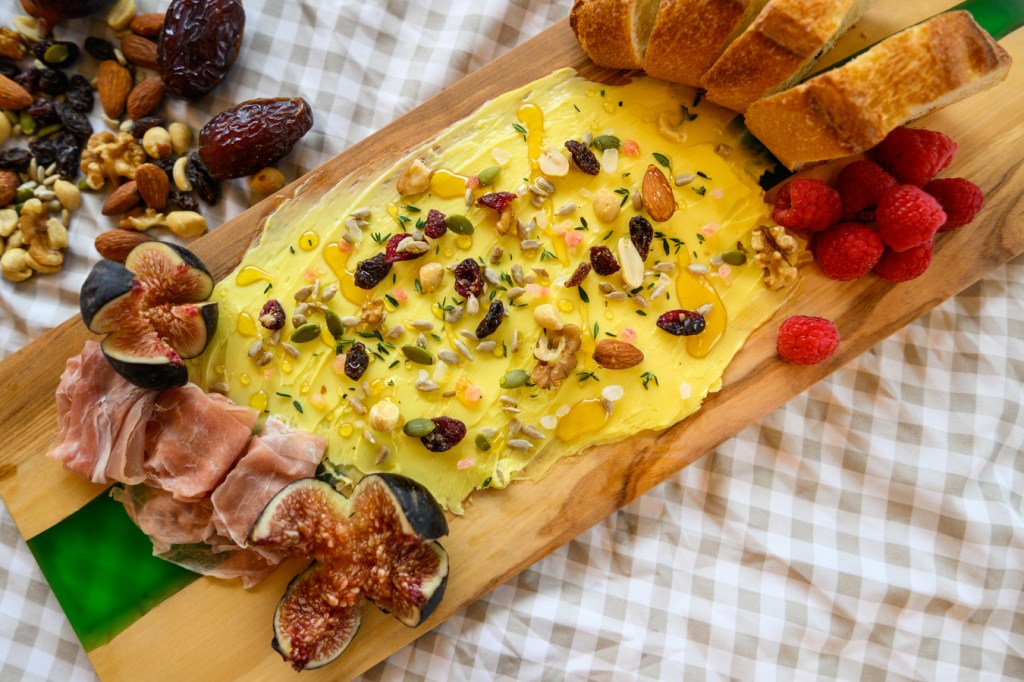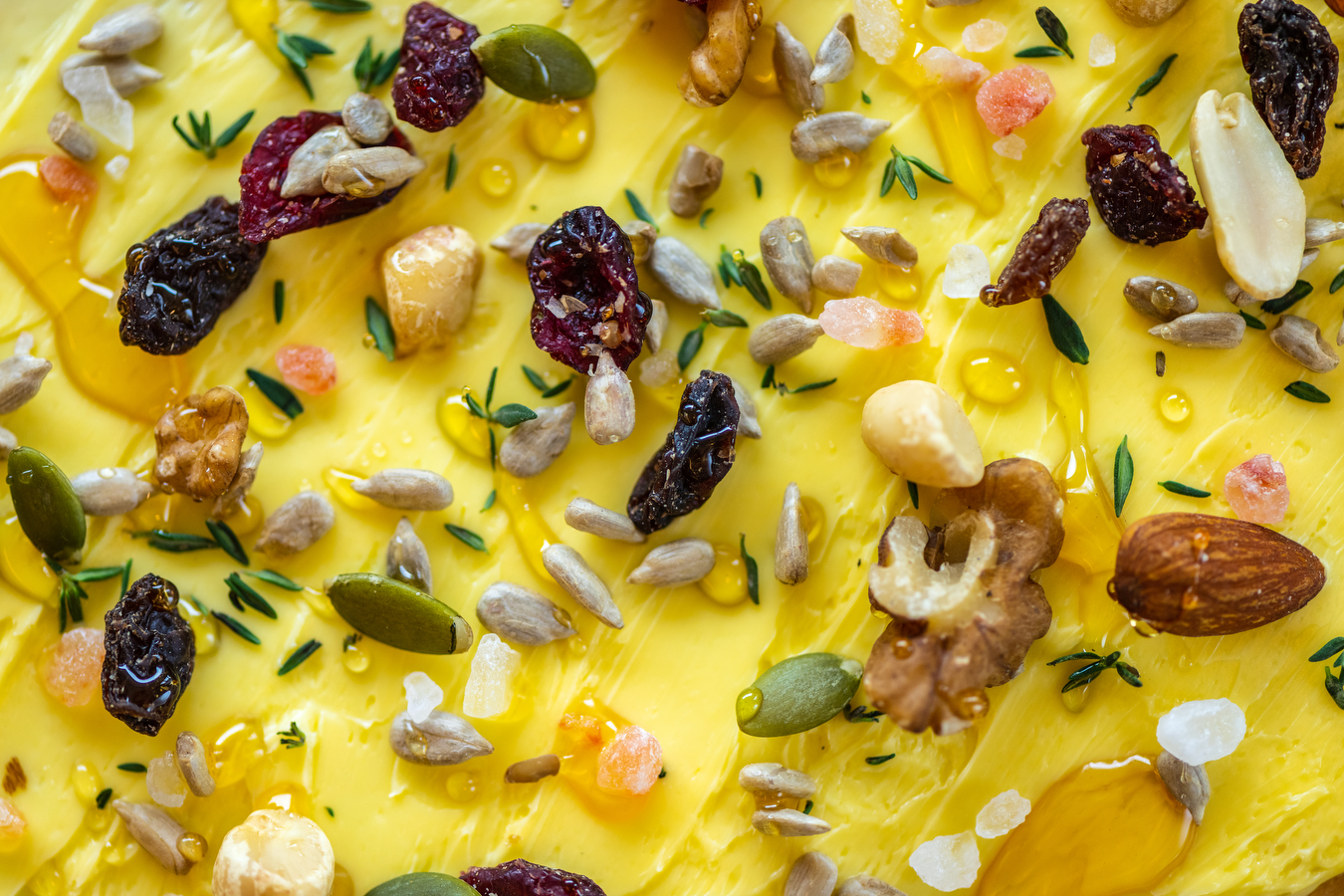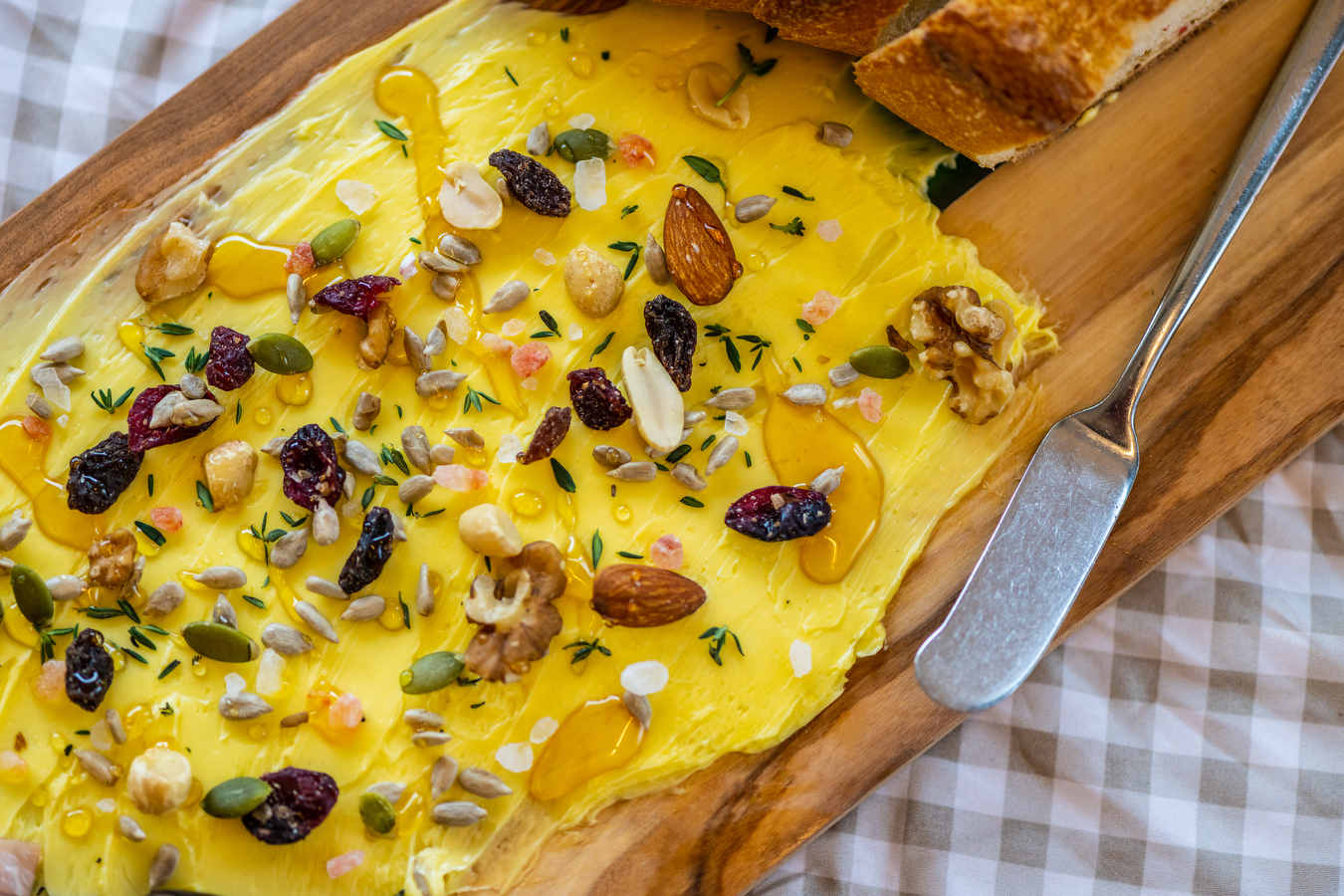Butter board viral food fad is yummy – but is it safe?

To foodies, butter boards—the latest viral food sensation—are nothing less than planks of creamy goodness topped with savory or sweet fixings.
To Northeastern food safety expert Darin Detwiler, the horizontal spreads meant to be scooped onto bread or bagels should come with a caution symbol about the risk of cross-contamination and potential illness.
“Do your due diligence,” he says, before offering tips on creating safe butter boards.

Butter boards are literally what they sound like—boards coated with butter, sometimes in swirly patterns, sprinkled with anything from lavender honey, seeds and jams to bacon bits and roasted garlic.
As popularized by Justine Doiron (@justine_snacks) on TikTok, they are typically paired with slices of warm, rustic bread. People dip the bread into the butter or spread it on slices using a utensil.
Some people are putting a twist on the original idea, which Doiron attributes to cookbook author Joshua McFadden, by slathering their boards with cream cheese instead of butter.
The worst of the COVID-19 pandemic may be behind us, but the idea of gathering around a butter board, breathing on it and handling food around it for hours gives Detwiler the chills.
“You’re having a lot of people come into one place, you’re putting things on a board that may not be safe and you’re leaving it out for a while,” he says.
Opportunities for cross-contamination multiply with every person who hovers over the board, Detwiler says.

“This is another example of what we refer to as a food disruptor,” he says.
“Pink Sauce, that was a disruptor,” Detwiler says, referring to the once infamous now Dave’s Gourmet condiment that exploded when first shipped in plastic bags.
“Ghost kitchens, third-party deliveries, using apps to buy food, all of these things are disruptors in terms of there was a way we were doing things—we had procedures and plans, protocols, law and regulatory compliance—and now all of the sudden we’re pushing the boundaries of how we do things.”
The butter board trend took off because the dips look pretty, are easy to assemble, engage people’s creativity, cost less than charcuterie boards and because … butter.
Detwiler says his intention is not to spoil the butter board party.
“There are ways of doing it that are safe,” he says.
First, he would use plastic instead of wooden cutting boards.
“I never ever use a wooden cutting board,” says Detwiler, an associate professor at Northeastern’s College of Professional Studies who is a national speaker on food safety topics and the author of “Food Safety: Past, Present and Predictions.”

He spoke at a meeting of the National Restaurant Association Sept. 20 in Orlando, Florida, and will be a keynote speaker for the Annual Rapid Response Team Meeting of the Association of Food and Drug officials Dec. 5 in Long Beach, California.
The problem with a wooden board is “you can’t really clean it. You have these microbe cracks, areas where little bugs can hide. By bugs I mean E.coli and salmonella.”
“I would recommend using a plastic board. Something that can be sanitized in the dishwasher,” Detwiler says.
He says he would also use smaller boards instead of one big showstopper.
Replenish when needed, Detwiler says. He prefers to keep cold foods cold and hot foods hot. Some professional cooks say butter is fine at room temperature, but the FDA says refrigerated foods should not be left out for more than two hours—one hour if the room temperature is 90 degrees.
Butter boards are not a good idea for people who are more susceptible to food borne illness and cross contamination, including people who are elderly, very young, pregnant or immunocompromised, Detwiler says.
The majority of college students may seem to have stomachs of steel, able to consume lukewarm pizza hours after delivery. But “you have to think about the most vulnerable person in a group,” Detwiler says.
And don’t try to save leftovers, he says. “It should all be thrown away.”
Would Detwiler avail himself of a butter board, should it be on offer?
“I would do it early” in the serving process, he says.
Detwiler says he perfected that technique during pre-Covid “Bagel Thursdays” at the College of Professional Studies.
“I’m in and out of there in the first half hour.”
For media inquiries, please contact media@northeastern.edu.





